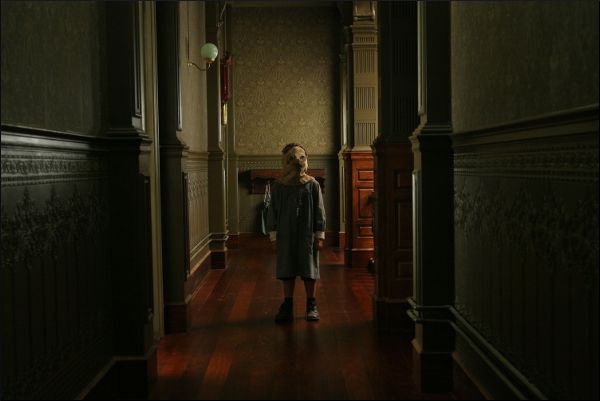Set in the province of Asturias, which is full of that mysterious and dark aura so typical of northern Spain (and so perfect for horror and thriller flicks), El orfanato (The Orphanage) is one of the biggest modern Spanish movies. It tells the story of Laura, a girl who spends her childhood in a large house that serves as an orphanage, where she has a happy time playing games such as “pilla-pilla” (which consists of catching other kids, similar to tag) and “pollito inglés” (which is like hide and seek). Very soon, Laura is adopted by a family.
Once she is an adult (Belén Rueda), she marries Carlos (Fernando Cayo) and adopts a kid named Simón, who is HIV-positive. Together, they intend to go back to the house where Laura grew up, rebuild it, and turn it into a care center for disabled children. But their peace and quiet is interrupted when an odd woman appears, the social worker Benigna Escobedo (Montserrat Carullar). Benigna wants to talk about Simón’s past, but Laura – who refuses to tell the child that he’s adopted and has a disease – tells her to leave. Then something else occurs: Simón starts saying he has invisible friends. He first admits he has one and then claims he has many more. He mentions fantastic games, like looking for objects his “friends” have hidden, and talks about Tomás, a kid who has the peculiarity of wearing a sack on his head. Simón’s parents don’t take him seriously and assume that his fantasies belong to a child’s world.

The day of the care center’s opening, Simón has a small argument with his mother because she doesn’t have time to visit “Tomás’ hut.” Simón disappears during the party and is never seen again. After months of unsuccessfully searching for him, Laura runs into Benigna on the street, but when she’s about to talk to her, the social worker is hit by a car and dies. Laura later discovers that Benigna had worked in the orphanage and had a son named Tomás, who had a physical deformity that forced him to cover his head with a sack, making other kids laugh at him. He also died accidentally. Distressed, Laura contacts a medium (Geraldine Chaplin) who reveals to her the spirits of the dead children in the orphanage, who remain there and cannot rest. Carlos decides to abandon the house, and Laura asks him to give her two days to reconstruct the layout of the former orphanage in a last-ditch effort to contact the spirits and find out what happened to Simón.
"Set in the province of Asturias, which is full of that mysterious and dark aura so typical of northern Spain (and so perfect for horror and thriller flicks), El orfanato (The Orphanage) is one of the biggest modern Spanish movies."
Released in 2007, The Orphanage was welcomed warmly and distributed not only in Spain but throughout other European countries, in North and South America, and in Asia. It grossed 80 million dollars, received 14 Goya awards (the Spanish Oscars), and was featured in the Cannes Film Festival. The Orphanage attempts to suit all kinds of audiences and clearly looks towards foreign markets beyond Spanish borders, staying away from any topic that might be representative of the country. Something similar happens in most other big Spanish productions, since local audiences don’t seem interested in recreations of Spanish culture or lifestyle. In this film, there is a total absence of any kind of Castilian slang, and the dialogue sticks close to a “neutral” accent. There aren’t many examples of local regionalisms or deviations from the “neutral” register, with the exception of “mucho morro” repeated in two occasions (which means "very smart" or "tricky") or the medium’s accent, although in this last case the reason is that California-born Geraldine Chaplin is not Spanish. Another foreign actor plays the role of the spokesman of the Paranormal Science Congress. His accent can be classified as South or Central American (probably from the north of South America), although at no point do we get to know exactly where he’s from. Interestingly, though the medium is a foreigner, she uses isolated Spanish slang like “la policía es guay” (the policeman is cool), as if to show that she’s been living in the country for a long time.




